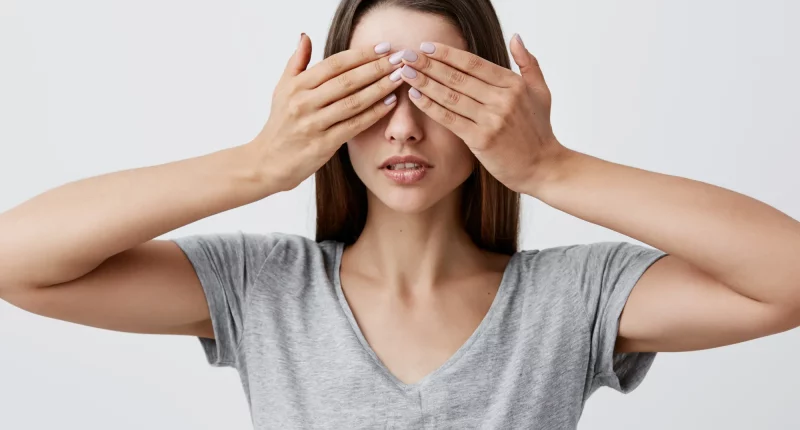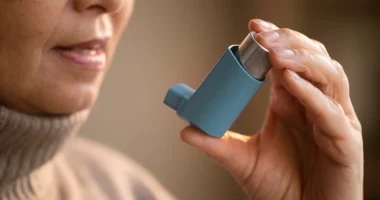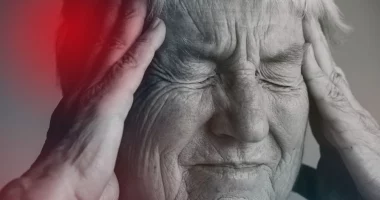A black eye happens when there’s bluish-dark bruising beneath the skin around the eye. This bruising occurs when small blood vessels break and blood leaks under the skin. Treatment can involve both home remedies, such as applying ice packs and taking non-prescribed pain relievers, and seeking medical help if the injury is severe or if complications arise.
Medically referred to as a periorbital hematoma, a black eye usually affects the area over the eye more than the eye itself. The discoloration and swelling are a result of the body’s response to the injury, as blood and other fluids accumulate in the tissues surrounding the eye. This condition is often seen after a blunt force impact to the face and can also occur after certain types of surgery.
The buildup of fluid over the eye causes swelling, puffiness, and bruising, which can make it difficult to open the eye and may temporarily blur vision. Pain over the eye and headaches are also common symptoms. If there is any bleeding inside the eye, it is crucial to seek medical attention to check for potential damage that could affect vision and to ensure proper healing.
Causes
A black eye happens when some person or things hits a person’s face, such as a fist, ball, door, or another object. The impact causes small blood vessels to break, leading to bruising and discoloration around the eye. In some cases, a black eye can also result from cosmetic or dental surgery, where trauma to the facial tissues can lead to similar bruising and swelling.
While a black eye itself isn’t usually life-threatening, the visible discoloration comes from the blood pooling under the skin due to the broken blood vessels. This bruising can cause the area to appear bluish-dark and swollen. However, if a black eye is accompanied by other symptoms of a physical eye injury, such as severe pain, vision problems, or persistent swelling, emergency medical treatment might be necessary to address potential underlying issues and prevent further complications.
Bruising around both eyes, often referred to as “raccoon eyes,” can indicate a more serious condition, such as a skull fracture or another type of head injury. This pattern of bruising suggests that there has been significant trauma to the head, which requires urgent medical care. Prompt evaluation by a healthcare professional is essential to diagnose and treat any serious injuries, ensuring the best possible outcome for the affected individual.
Symptoms
The black eye symptoms typically start with swelling over the eye after an injury. This swelling can cause the skin color to change, progressing from red to green, yellow, purple, and finally black as bruising develops. Pain may be constant or only felt when the area is touched, and blurry vision can happen.
Over a few days, the inflammation usually goes down and the discoloration lightens. A black eye usually heals on its own within 2 to 3 weeks without needing medical treatment.
In some cases of injury, there may also be blood on the white area of the eye, known as a subconjunctival hemorrhage. This typically heals within almost 2 weeks.
Home remedies
Home remedies can effectively treat a black eye and ease discomfort. During the initial 1 to 2 days after the injury, applying an ice pack for 10 to 20 minutes at a time can reduce swelling. After this period, switching to a warm pack can help promote healing.
Non-prescribed pain relief medicines can also be used to manage any discomfort. It’s crucial not to press too firmly on the bruised area and never apply ice straight to the skin.
Contrary to popular belief, keeping raw meat on a black eye is not recommended. Raw meat carries bacteria that can increase the chance of infection, especially when in contact with the delicate eye area. Therefore, it’s best to stick to safer and proven home remedies for treating a black eye.
Treatment
Healthcare providers generally suggest home remedies for medicating a black eye. However, medical treatments should be needed if the black eye doesn’t cure on its own or if it is accompanied by other concerning signs.
Before suggesting a treatment plan, a healthcare provider will be required to diagnose the cause of the symptoms. This may involve checking the individual’s vision and examining the bones over the face and eye. If a bone fracture is suspected, the healthcare provider might order imaging tests, like a CT scan or X-ray.
Based on the underlying cause, the healthcare provider can then recommend the appropriate medical treatments.
Prevention
Preventing a black eye is possible in many cases by taking precautionary measures. For instance, putting on protective eye goggles can significantly reduce the risk during activities like woodwork, metalwork, or gardening. Similarly, using protective eyewear while participating in sports such as boxing, martial arts, or contact sports can prevent injuries around the eye.
Around the home, securing carpets and rugs to prevent tripping and eliminating clutter and other trip dangers can also help avoid accidents that could lead to a black eye. Additionally, ensuring that both indoor and outdoor areas are well-lit can further minimize the chances of injury from falls or collisions. These simple steps can go a long way in preventing the occurrence of a black eye.
When to consult a healthcare provider
While a black eye typically heals on its own, it can sometimes signal a more serious issue, such as fractures of the skull, hematoma affecting critical structures like the eyes, or bleeding and swelling impacting the brain. In such cases, it’s important to contact a healthcare provider promptly if the bruising doesn’t improve or if other concerning symptoms arise.
Symptoms that warrant medical attention include blood from the ears or nose, blood visible on the eye’s surface, or difficulty in eye movements. Two black eyes could show a skull fracture, especially if accompanied by loss of consciousness, vomiting, or seizures following an injury.
Additionally, long-lasting vision issues, double vision, a sensation of particles on the eye, or trouble moving the eyes should also prompt a visit to the healthcare provider. These signs may indicate underlying issues that require medical evaluation and appropriate treatment.
Summary
A black eye results from a facial injury, causing bruising and swelling around the eye. It usually heals on its own within 2–3 weeks with home remedies like ice packs and pain relievers. Medical attention may be needed if symptoms persist or include severe pain, vision problems, or signs of a skull fracture like bleeding from the nose or ears.
Preventive measures include wearing protective eyewear during activities prone to injury and keeping home environments well-lit and free from hazards. Early consultation with a doctor is crucial if symptoms worsen or additional concerns arise.








